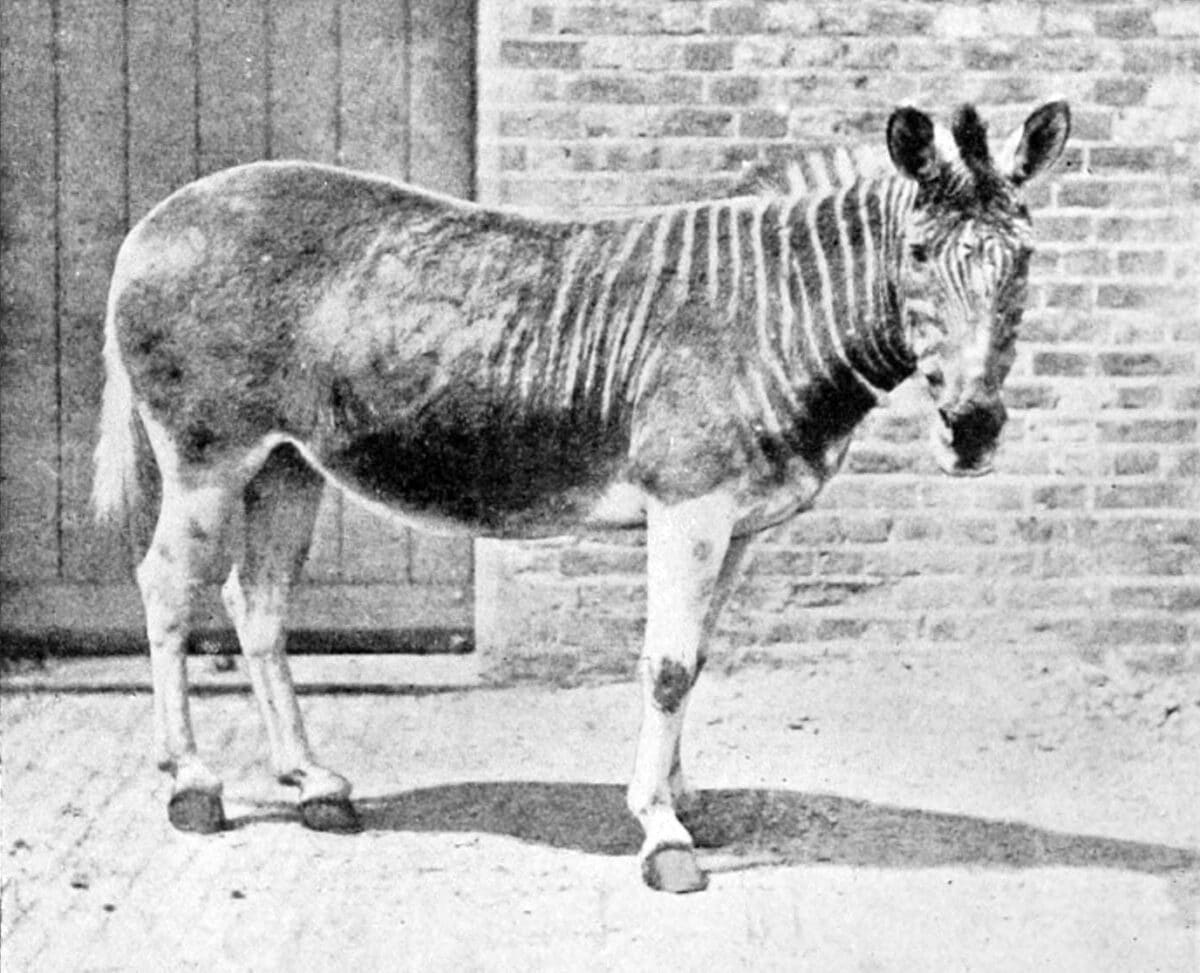More than 99% of all living species have gone extinct. Whole time periods are buried in layers of rock and sediment and, with it, libraries of information about Earth’s history and what came before us.
Let’s look at some artistic reconstructions of extinct animals and discuss what we know about their extinctions.
Giant Tree Kangaroo (Bohra paulae)

Australia is notorious for their weird and wonderful creatures, and the giant tree kangaroo fits right in. This extinct relative of modern tree kangaroos weighed an estimated 77–104 lb (35–47 kg) and had tails that were close to 5.9 ft (1.8 m).
Giant tree kangaroos likely went extinct around 22,000 years ago during the Late Pleistocene era. Fossils were first found in 1982 in a New South Wales cave.
Long-Legged Pig (Kubanochoerus robustus)

A pig with a unicorn horn? Apparently! Long-legged pigs are characterized by the spiky bone sticking out their forehead and, less exceptionally, their long legs. It is speculated that the boars used their horns to joust one another.
These pigs roamed around Eurasia and Africa during the Miocene epoch, until their extinction around 16 million years ago.
Melanopsis parreyssi

Melanopsis is a genus of freshwater snails, and M. parreyssi is an extinct species. This snail inhabited parts of Hungary, Romania, and Croatia until its extinction in 2010.
The species was critically endangered by the 2000s, with one of the last places it resided being Peţea Lake, Romania. The species became extinct when the hot water spring, which fed the lake, dried up due mostly to the illegal use of thermal water in the area.
Chatham Penguin (Eudyptes warhami)

Chatham penguins were endemic to the Chatham Islands of New Zealand. Their subfossil bones were initially thought to be of Fiordland or erect-crested penguins, both of which are still in existence, but, in 2019, they were formally described as a species that had gone extinct.
They are believed to have gone extinct around 200 years after the arrival of the Polynesians to the Chatham Islands.
Newfoundland Wolf (Canis lupus beothucus)

The last known sighting of this grey wolf subspecies was around 1911, and they were declared extinct in 1930.
Wolves were extensively hunted throughout the 19th century in North America due to the colonial government offering a massive bounty of five pounds sterling for the dead body of a wolf, since they were killing livestock. Further, with the arrival of the settlers, there became much competition for resources.
Passenger Pigeon (Ectopistes migratorius)

Passenger pigeons once numbered 3–5 billion all across North America, making it the most abundant bird species on the continent.
The development of railroads in the 1860s spelt doom for the birds, as the areas they resided were deforested, and they became hunted en masse for affordable meat. The last passenger pigeon died in captivity in 1914 at the Cincinnati Zoo.
Woolly Rhino (Rhinoceros tichorhinus)

Woolly rhinos roamed the Ice Age, also known as the Pleistocene epoch, which ended around 12,000 years ago, alongside woolly mammoths. There have been many cave paintings and fossils found around Eurasia depicting these herbivores, which led to their becoming mythical legends for hundreds of years.
They were first scientifically described in 1769, and their extinction was likely due to climate change.
Thylacine (Thylacinus cynocephalus)

Also known as the Tasmanian tiger or wolf, thylacines were marsupials that inhabited Australia, Tasmania, and New Guinea, although they appeared to have died out in Australia and New Guinea over 3,000 years ago. They survived on Tasmania, however, until 1936, when the last female died in captivity.
Similar to what happened to the Newfoundland wolf, the Tasmanian government offered rewards for dead thylacines, due to their killing of livestock.
Behemotops proteus

A herbivorous marine mammal resembling a hippo, B. proteus lived during the Oligocene epoch, 23 million years ago, in waters around North America. The genus name Behemoptus comes from the Biblical monster “Behemoth,” who was believed by some scientists to be a hippo.
The entire order that B. proteus falls into, including at least six species, named Desmostylia, went extinct due to over competition for resources.
Pemberton’s deer mouse (Peromyscus pembertoni)

The early 1900s was clearly a devastating era for wildlife. These mice were endemic to San Pedro Nolasco Island on the Gulf of California until their extinction in 1931. It’s unclear why they went extinct, but it’s likely due to increased competition for resources on the island.
Conclusion

Thanks for reading! You may also like:
Join our Forum for free today!

- Glow-in-the-Dark Sharks & Other Fascinating Bioluminescent Fish - July 10, 2024
- Why Flamingos Are Totally Hardcore - July 3, 2024
- Nuclear Tech to Combat Poaching: Radioactive Rhino Horns - July 2, 2024
